Hear the incredible story behind the best tasting citrus variety on earth - Sumo Citrus.
This post includes affiliate links. This means that, at no additional cost to you, I will earn a commission if you click through and make a purchase. These are products and services I recommend because I use or trust them. Cookies will be used to track the affiliate links you click.
In sports you hear talk of a game changer.
Either it's a moment in a game where an event takes place that instantly changes the momentum of the game, or it could be a trade or free agent signing that takes a team to the next level of competition.
In the produce world, you also have your game changers. A few years back, when Sumo mandarins first hit the stores, the game was changed.
Never has there been a piece of citrus that comes in such a huge package that is so easy to peel, and so rich in flavor.
Everything else has to try and measure up.
For diehard fans like me their annual arrival in stores has now become the pinnacle moment of the entire citrus season. None of this happens overnight. There is a story to tell about how Sumos get from the tree to your hands. Today I am going to tell you that story.
History of Sumo Citrus
There is a wonderful article published in the LA Times that gives a detailed background on the Sumo, make sure to check that out.
To give a summary - the Sumo, whose name overseas is the Dekopan was developed in Japan in 1972. It made it's way into South Korea, China, and Brazil. Imports weren't allowed into the United States.
In the late 1990s, a man by the name of Brad Stark Jr. brought budwood branches to the U.S. in order to graft new trees. Still it took years for the first trees to be planted. The fruit couldn't be imported due to real concern about spreading citrus diseases foreign to U.S. soil. So the branches brought to the U.S. went through a process that took several years to cleanse the tree of these potentially harmful diseases.
In the meantime, another company secretly brought in their own budwood and planted trees in the San Joaquin Valley that were infected with disease. They were discovered and were seriously fined and ordered to destroy the trees.
If those diseases spread to other citrus trees who knows what kind of damage it would have caused the California citrus industry. Brad Stark Jr's company eventually went bankrupt, but his disease free trees eventually ended up in the hands of the Griffith family owners of TreeSource Citrus Nursery and Suntreat Packing & Shipping. They enlisted growers who had to grow the fruit in secret until 2011, when the first commercial crop was ready.
I am amazed by all the hard work and time spent just to begin growing the fruit in the U.S. The story is fascinating, it could be turned into a Hollywood blockbuster. I can envision Nicholas Cage with guns blazing as he takes the disease free budwood away from the evil villains.
The Passion of the Sumo Growers
When the fruit was finally able to be grown it wasn't just given to any citrus grower. These people were sought out and selected to grow it.
I recently had the opportunity to communicate directly with two of the Sumo Citrus growers (Jonelle George and Guy Wollenman). In those conversations I could really feel their passion for citrus and their role in the industry. It just jumped right off my computer screen. These people are truly excited to be growing Sumos and even through all the challenges, it was well worth it, no doubt about it.
I got excited just hearing about their excitement. These are the kind of people I want to buy my fruit from. They care, they desire to do a good job, and they are loving it along the way. I have seen many a farmer that looks like all the life was sucked out of them and they had no passion for what they were doing.
Talking to these two growers shows that farming, whether it be fruit or vegetable, is still something people are passionate about. It makes me smile...ear to ear!
The Challenges of Growing Sumos
Not only was it challenging to get the fruit to the point where it could grow in the U.S. without spreading disease, growing the fruit itself was a new challenge to even seasoned citrus growers.
The standard citrus horticultural techniques do not work with Sumo. The fruit must be pruned in a certain way so that areas of the tree that produce sub-quality fruit are removed. They also must prune them more like a peach tree, so that the sun can shine upon the fruit itself, which helps sweeten it.
The neck on the fruit that gives the Sumo it's name is susceptible to damage by wind and rain. When the fruit is ready to be picked it has to be done so careful. They go into totes until they make it the packing house. You won't see big bins of Sumos like you do oranges. Even then the cases they go into are flat and wide single layer cases.
The Fruit Picked for Quality
When the fruit is ready to be picked, it's not done so all at once. The fruit is carefully selected. Different parts of the citrus grove are picked when ready. Due to slight different micro climates in the San Joaquin Valley, they are ready at different times. You don't just send people in to pick the trees bare. And like I mentioned above they have to be delicately handled.
The LA Times report also mentions that at the start of the harvest the fruit goes through a curing process that utilizes a secret Japanese storing method that reduced the tartness of the fruit.
Why More Expensive?
After reading this story you can see all the work that has been put into growing Sumos. It's a more labor intensive piece of citrus. So when you head to the grocery store, you can expect to pay more money for them.
Last year they were going for $3.99 a pound at my local Whole Foods markets - one of the top carriers of Sumo Citrus. They cost more to produce and they are still a new crop, they are going to be among the more expensive pieces of citrus in your produce aisle.
What you are paying for it is top of the line quality fruit grown by passionate growers, who work their tails off to bring you an amazing taste experience that is worth every single penny you pay.
Even though I may not be buying them by the case or bag full, I will manage to squeak some money out of the food budget to enjoy the fruits of their labor.
? Buying Your Own Trees
You may be wondering if you could just buy your own tree and grow them yourself. As you read the story above, there is a lot of protection around this variety. Thus it's not available for backyard growers.
Even if you were to find a seed in this seedless fruit (there is always a slight chance there could be a seed), it may not be mature enough to produce a tree and whatever fruit was produced is not likely to be true to form. So unless you want to become a commercial grower and work directly with those with the trademark, you are going to have to stick to buying them at the store.
Featured in Fruit of the Month Club
Before I wrap up this post I wanted to share with you, Sumo fans a great way to get your Sumo fix or share them with a friend.
I recently discovered that in February, Sumo Citrus is one of the varieties in Golden State Fruit's monthly fruit club (affiliate link) that you can order right on Amazon. They offer better choices than other fruit clubs I have researched. During the year they offer special varieties like Sumo Citrus, Sugar Cot Apricots, Pixie Tangerines, Bing Cherries, Pearl White Nectarines, and more. The club comes in 3-month, 6-month, 12-month.
Sumo Citrus Recipes
Here are a couple recipes I came up with that utilize this amazing fruit.
✍️ Let us know what you think of Sumo Citrus? Are they worth the extra money? Leave a comment below.
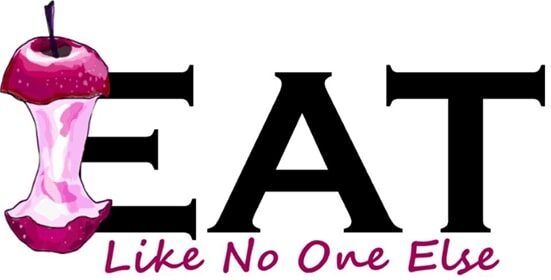

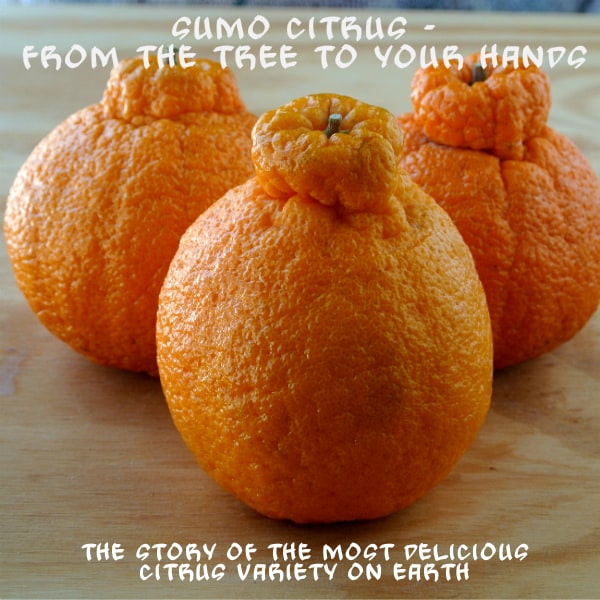
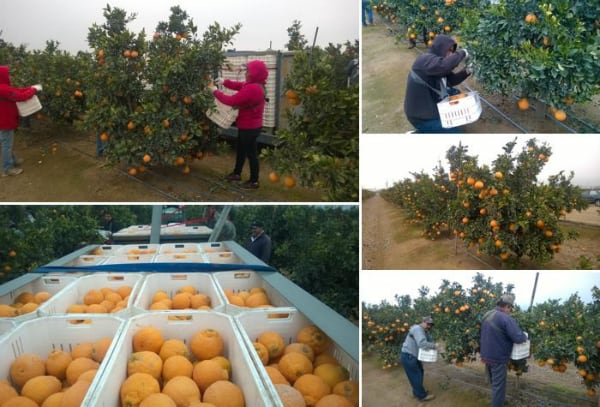
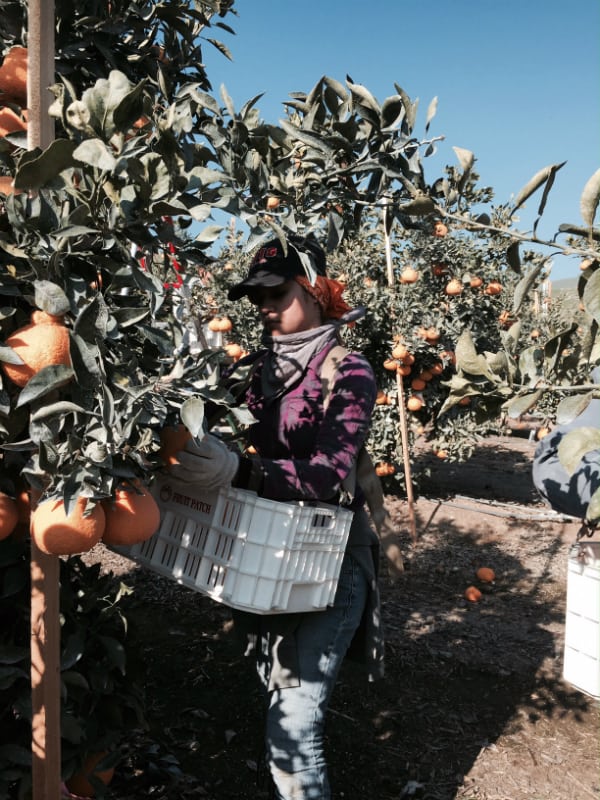
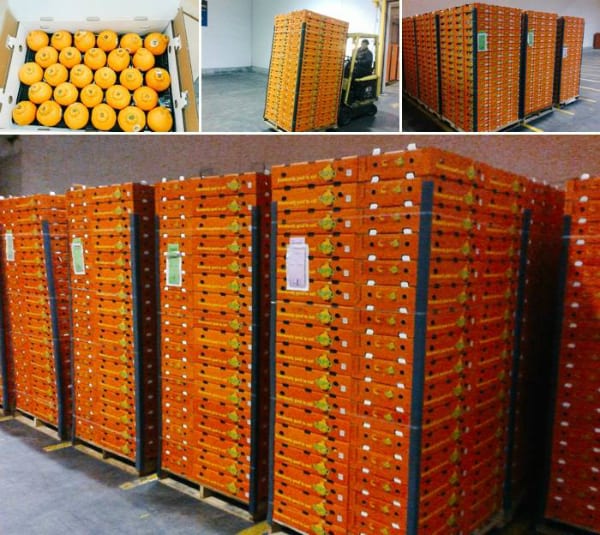
Lee Ingram
Where can I buy a Sumo Citrus tree?
Eric Samuelson
You can't. They are only licensed to grow to certain growers.
Roberto Fernandez
I'm a Citrus fruit fan and this is the third year in a row i get to enjoy the Sumo Mandarin. By far it's my favorite of the sweet citrus fruits. I buy mine at my local Fresh Market grocery store or Whole Foods. Don't let the high price deter you from trying it. I is well worth the price we have to pay for it. I view it as paying for a delicacy/dessert. I'll take a Sumo Mandarin over a piece of fancy cake. That's how good it is!
Ada Rivera-Castillo
First time I tired these sumo it was great the price is high but it was worth it.
HanO
I have a few Sumo seedlings grown from seed. Sumo plants are nasty trees filled with daggers. They are extremely thorny and unpleasant.
They are also really in need of pruning since branches left unpruned will quickly grow so long they droop and break under their own weight.
Wonderful fruit but the nastiest citrus tree I've ever had the displeasure of growing.